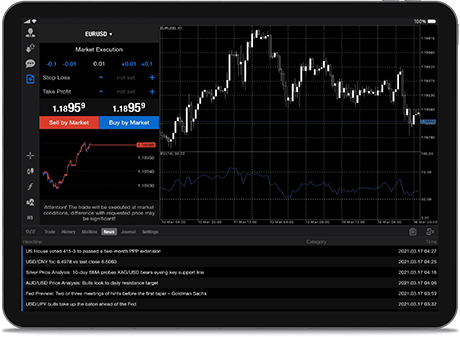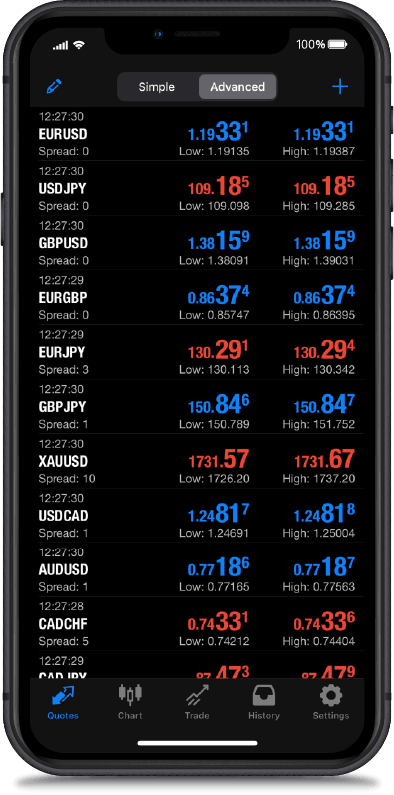O SEU CORRETOR DE CONFIANÇA
PARA NEGOCIAÇÃO
PARA NEGOCIAÇÃO
Aceda a mais de 350 produtos, incluindo forex, CFD de ações, Índices e metais com as plataformas MetaTrader 4/5
SPREADS EM TEMPO REAL
EUR / USD
SPREAD
0.00
COMPRA
-----
VENDA
-----
XAU / USD
SPREAD
0.90
COMPRA
-----
VENDA
-----
EUR / JPY
SPREAD
0.10
COMPRA
-----
VENDA
-----
USD / JPY
SPREAD
0.00
COMPRA
-----
VENDA
-----
GBP / USD
SPREAD
0.20
COMPRA
-----
VENDA
-----
Os preços em tempo real são meramente indicativos.
STANDARD
Sem comissões
PIPS
XAU/USD
PIPS
EUR/USD
PIPS
USD/JPY
PIPS
EUR/JPY
PIPS
GBP/USD
PIPS
EUR/GBP
- Depósito mín. $100
- Alavancagem máx. 1 : 500
RAW
Comissão baixa
2.5 USD/lado
PIPS
XAU/USD
PIPS
EUR/USD
PIPS
USD/JPY
PIPS
EUR/JPY
PIPS
GBP/USD
PIPS
EUR/GBP
- Depósito mín. $100
- Alavancagem máx. 1 : 500
TIPO DE CONTA
MAIS ADEQUADA A SI
MAIS ADEQUADA A SI
Na RADEX MARKETS, estamos empenhados em oferecer configurações e execuções de negociação competitivas.
MELHORE A SUA JORNADA DE NEGOCIAÇÕES CONNOSCO
Negocie como nunca antes fez, com as nossas funções excelentes.
A nossa plataforma integrada e de fácil utilização permite-lhe navegar nos mercados com facilidade.











